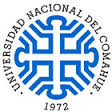- RDI Principal
- →
- Centro Regional Universitario Bariloche
- →
- Artículos
- →
- Ver ítem
JavaScript is disabled for your browser. Some features of this site may not work without it.
Mostrar el registro sencillo del ítem
| dc.creator | Farji-Brener, Alejandro G. | |
| dc.creator | Carrillo-Fajardo, Merly Yenedith | |
| dc.creator | Rodríguez-Malacara, Jorge Tanit | |
| dc.creator | Arroyo-Rodríguez, Víctor | |
| dc.date | 2024 | |
| dc.date.accessioned | 2024-09-05T18:50:04Z | |
| dc.date.available | 2024-09-05T18:50:04Z | |
| dc.identifier.uri | http://rdi.uncoma.edu.ar/handle/uncomaid/18122 | |
| dc.description.abstract | Understanding why animals avoid some locations is needed to improve the theory of habitat selection. This is key in semi-sedentary organisms, such as antlion larvae, because once established they rarely move, and their performance largely depends on local environmental conditions. Antlion larvae are sit-and-wait predators that build conical pitfall traps in sandy soils to capture passing prey. They clean constantly their traps, expelling soil, prey carcasses and debris out of the pit to maintain their trapping success. Therefore, we propose that they avoid soils with leaf litter because leaves hinder the maintenance of their pits; a hypothesis that has not yet been tested. We first demonstrated that antlion larvae (Myrmeleon inmaculatus) are rare from soils with leaf litter in a tropical semi-deciduous forest in Mexico. We then experi- mentally tested the effect of leaf litter on pit maintenance by adding debris in 90 antlion traps, 45 of which were covered with a leaf, and 45 remained uncovered. Two hours after adding the debris, we recorded its location and quantified the variation in depth and diameter of the pits. Larvae in uncovered traps were twice as effective at cleaning up the debris than larvae in covered traps. Furthermore, in just 2 h, covered traps were on average 21% shallower than control traps, probably because unsuccessful attempts to clean debris caused sand slides to fill the pit partially. Leaf litter seems to hinder the proper maintenance of antlion traps, explaining at least partially, why these animals are rare under leaf litter. | es_ES |
| dc.format | application/pdf | es_ES |
| dc.format.extent | PP. 138-144 | es_ES |
| dc.language | eng | es_ES |
| dc.publisher | Royal Entomological Society | es_ES |
| dc.relation.uri | https://doi.org/10.1111/een.13290 | es_ES |
| dc.rights | Atribución-NoComercial-CompartirIgual 2.5 Argentina | es_ES |
| dc.rights.uri | https://creativecommons.org/licenses/by-nc-sa/2.5/ar/ | es_ES |
| dc.source | Ecological Entomology: Volume 49, Issue 1 | es_ES |
| dc.subject | Habitat avoidance | es_ES |
| dc.subject | Myrmeleontidae | es_ES |
| dc.subject | Sit-and-wait predator | es_ES |
| dc.subject | Tropical dry forest | es_ES |
| dc.subject.other | Ciencias de la Tierra y Medio Ambiente | es_ES |
| dc.title | Why are antlion larvae rare under the leaf litter? Testing the hypothesis of improper trap maintenance | es_ES |
| dc.type | Articulo | es |
| dc.type | article | eu |
| dc.type | acceptedVersion | eu |
| dc.description.fil | Fil: Farji-Brener, Alejandro. Universidad Nacional del Comahue. Centro Regional Universitario Bariloche; Argentina. | es_ES |
| dc.description.fil | Fil: Farji-Brener, Alejandro. Consejo Nacional de Investigaciones Científicas y Técnicas. Instituto de Investigaciones en Biodiversidad y Medioambiente; | es_ES |
| dc.description.fil | Fil: Carrillo-Fajardo, Merly Yenedith. Universidad Pedagógica y Tecnológica de Colombia. Facultad de Ciencias; Colombia. | es_ES |
| dc.description.fil | Fil: Carrillo-Fajardo, Merly Yenedith. Universidad de Córdoba. Departamento de Biología; Colombia. | es_ES |
| dc.description.fil | Fil: Rodríguez-Malacara, Jorge Tanit. Universidad Nacional Autónoma de México. Facultad de Estudios Superiores Iztacala. Laboratorio de Ecología Molecular y Evolución; México. | es_ES |
| dc.description.fil | Fil: Arroyo-Rodríguez, Víctor. Universidad Nacional Autónoma de México. Instituto de Investigaciones en Ecosistemas y Sustentabilidad; México. | es_ES |
| dc.description.fil | Fil: Arroyo-Rodríguez, Víctor. Universidad Nacional Autónoma de México. Escuela Nacional de Estudios Superiores, unidad Mérida; México. | es_ES |
| dc.cole | Artículos | es_ES |



